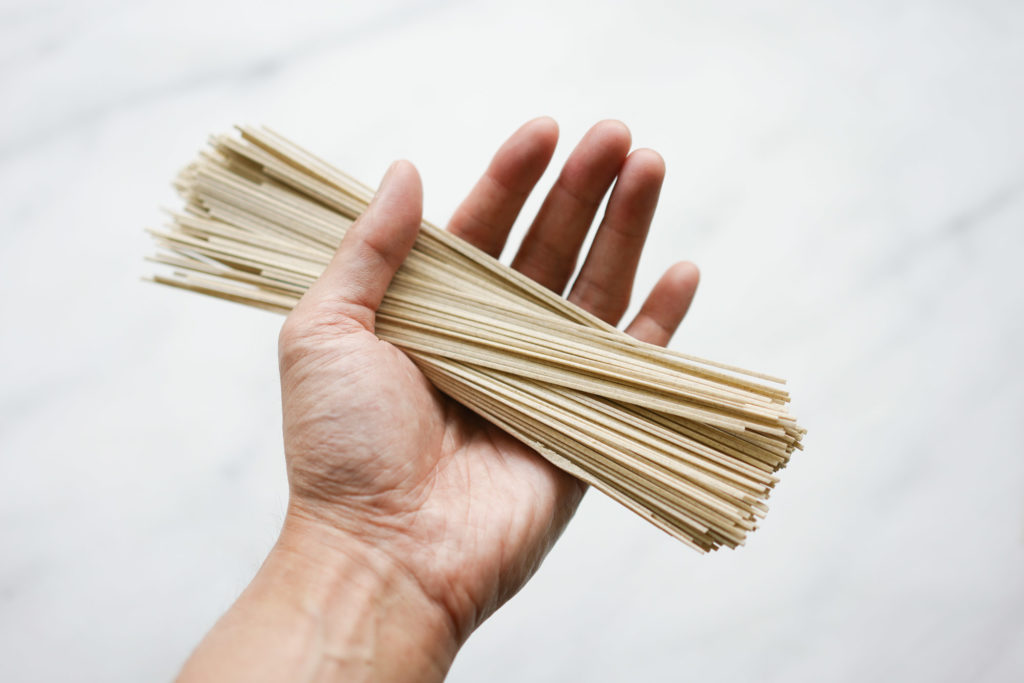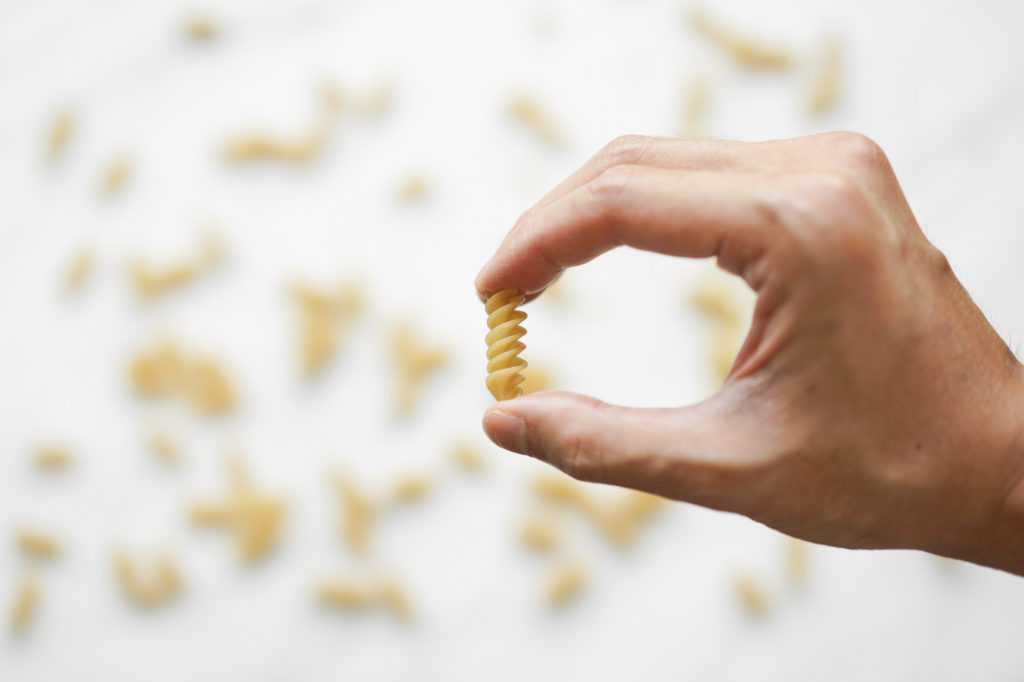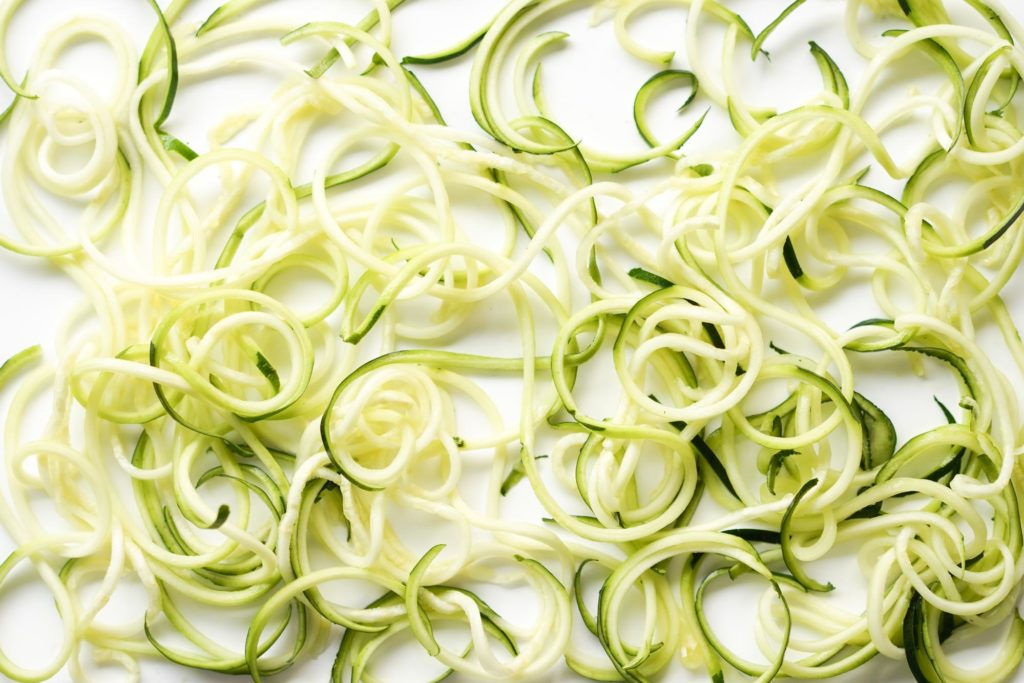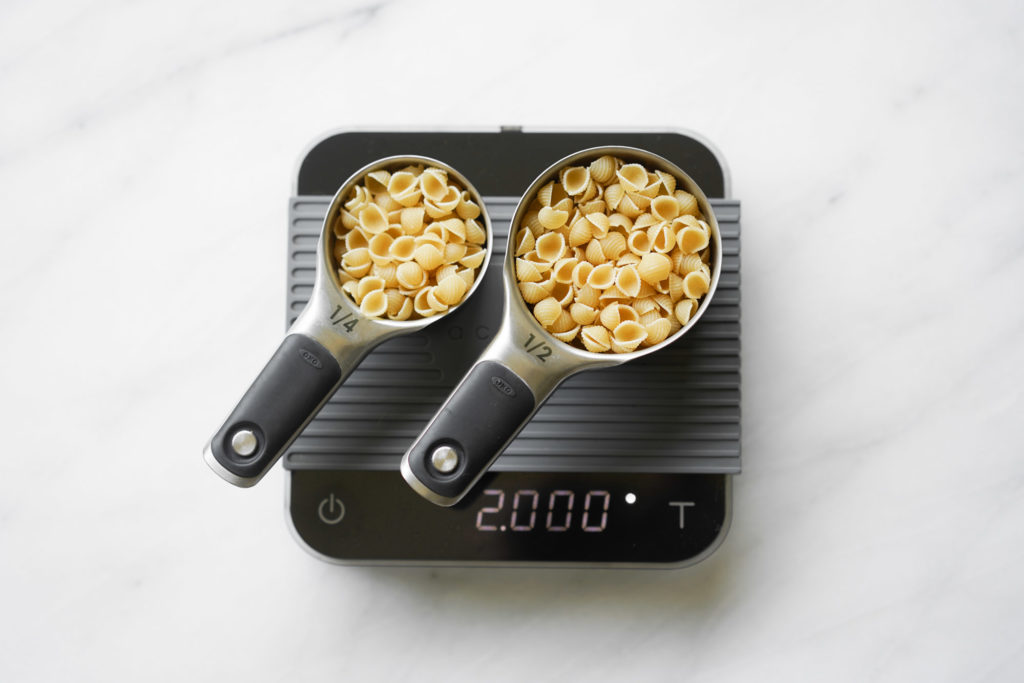11 Healthy Noodles and Their Nutritional Info
I love a big bowl of cheesy pasta as much as the next person, but there’s always too much of a good thing, right? Usually it leaves me feeling sluggish and, if too much dairy is involved, with a sore stomach. So I try to use more nutritious alternatives when possible — while zoodles are the most common, and probably my favorite (chickpea pasta takes a close second), there are so many other healthy noodles worth trying!

Is Pasta Bad for You?
Like many foods, pasta isn’t bad for you in moderation. The thing is, it’s easy to consume over double the suggested portion size (more on that below). Add a creamy sauce and loads of cheese, and you have a high calorie, low-nutrient dish.
However, if you choose the type of pasta and toppings wisely, you can create a balanced dish. When browsing the pasta aisle, be wary of pasta made from refined white flour, which is high in calories and low in nutrients. Instead, look for higher fiber and higher protein options, which will keep you full for longer. Whole grain pasta is a slightly better alternative, and pasta made from legumes like edamame or chickpea is even more nutritious.
Make sure to check the ingredients and nutritional label when choosing your pasta, as some will include blends of different flours including refined flour, corn flour, or rice flour, which are less nutritious.
That being said, pasta is low on the glycemic index, which measures how fast or slow foods increase blood glucose levels. This means that blood glucose rises slowly vs. spiking immediately after ingesting pasta, so you’ll feel full for longer. This is rare for refined carbohydrates — bread, for example, is high on the glycemic index.
11 Types of Healthier Noodles
First, we’ll dive into what we’d typically think of as pasta — wheat and legume based noodles. Then, we’ll cover some veggies that can be spiralized and treated as a low-carb pasta alternative.
| Noodle Type | Calorie | Carbs (g) | Protein (g) | Fiber (g) | Fat (g) |
| Spaghetti | 200 | 44 | 4 | 1.01 | 1 |
| Whole wheat spaghetti | 180 | 39 | 8 | 7 | 1.5 |
| Soba (buckwheat) noodles | 146 | 35 | 5 | 1.5 | 1 |
| Brown rice noodles | 200 | 44 | 4 | 4 | 1 |
| Chickpea pasta | 190 | 32 | 14 | 7.98 | 3.5 |
| Edamame spaghetti | 180 | 20 | 24 | 13 | 3.5 |
| Red lentil penne | 180 | 34 | 13 | 6 | 1.5 |
| Quinoa pasta | 210 | 46 | 4 | 4 | 1 |
1. Whole Wheat Pasta

Whole wheat pasta isn’t as processed as regular pasta. It still contains the bran and germ, which is why whole wheat pasta has a higher amount of protein, fiber, vitamins, and minerals. Whole wheat pasta has a heartier flavor and slightly denser texture than regular pasta, but in my opinion if you add the right sauce you can barely tell the difference.
2. Soba (Buckwheat) Noodles

Soba noodles are popular in Japanese dishes. They’re thin, nutty-flavored noodles made of buckwheat and often served cold. Soba noodles can either be made of buckwheat flour and water (gluten-free), though often they’re made with a mix of wheat flour and buckwheat flour. If you’re looking for a gluten-free noodle, make sure to check the label to see what mixture of flours are used. While their protein and fiber is only slightly better than regular noodles, they’re lower in carbs and higher in some nutrients like zinc.
3. Brown Rice Noodles
If you’re looking for a gluten-free option, brown rice pasta is an alternative to regular pasta. However, while it’s higher in fiber than regular pasta, it’s about equivalent in calories, carbs, and protein. Depending on the shape or brand, brown rice pasta can be denser or stickier than regular pasta, but it’s still a great versatile option.
4. Chickpea Pasta
Chickpea pasta is my absolute favorite healthy noodle option! The texture is similar to regular pasta, and it’s high in protein and fiber and low in carbs. The chickpeas add a creamy flavor to the pasta, which is a plus if you don’t want to add loads of cheese. I prefer the Banza brand to others I’ve tried, which comes in a variety of shapes including penne, spaghetti, and shells. It’s also gluten-free and high in potassium and iron.
5. Edamame Spaghetti
Edamame pasta is one of the healthiest noodle alternatives. It’s low in carbs and high in protein and fiber. One serving has as much protein as in your average protein shake! Edamame noodles are rich in vitamins and minerals like folate and vitamin K. They don’t have a drastically different flavor than regular pasta, and sometimes can even be found in bulk at Costco. It’s gluten-free and soy-based.
6. Red Lentil Penne
Red lentil pasta, like other legume-based alternatives, is high in protein and low in carbs. It has less protein than edamame or chickpea pasta, but is still rich in folate and iron. Red lentil pasta is another great gluten-free option. They have a slightly earthy flavor, but solid texture that cooks to a nice al dente.
7. Quinoa Pasta
Quinoa pasta is gluten-free and has a similar taste and texture to regular pasta. While it has a similar amount of calories and carbs as regular pasta, it does have a bit more fiber. Make sure to read the label when buying quinoa pasta, as some brands mix in corn or filler flours, which decreases the nutrients. Quinoa is rich in vitamins and minerals, including magnesium and iron, and contains all nine of the essential amino acids.
8. Zucchini Noodles (Zoodles)

Zoodles are one of the most popular healthy noodle options. They’re low calorie — only about 20 calories per cup — and high in fiber, antioxidants, vitamin A, manganese, vitamin C, and other vitamins and minerals. They’re super quick to make with either a manual spiralizer or a spiral attachment. I’ll often eat mine raw or microwave for 15-30 seconds before topping with protein. You can even save them for a few days in the fridge. Just make sure to line the tupperware with a paper towel so they don’t get soggy.
9. Spaghetti Squash
Spaghetti squash takes a bit longer than zoodles to prepare. The easiest way is to slice it in half, scoop out the seeds, place it face down on a pan, and roast it in the oven for about 45 minutes at 400℉. Once done, run a fork through it to create noodle-like pieces. Spaghetti squash just over 30 calories per cup, and is rich in vitamin C and antioxidants. It has a slightly sweet flavor that pairs well with tomato-based sauces or garlic and herb sauces.
10. Shirataki Noodles
These are also known as miracle noodles or konjac noodles. They’re made from the root of the konjac plant which contains glucomannan, a type of fiber. This, along with their water content, creates a low-calorie noodle that helps you feel full. They have only about 13 calories per cup. Often shirataki noodles have an unpleasant, slightly fishy smell when taking them out of the packaging. Rinse them well, boil them for a few minutes, then heat in a pan to remove excess water for the best texture and taste.
11. Kelp or Seaweed Noodles
Kelp noodles are a clear, thin noodle made of kelp, water, and sodium alginate. They’re often found in Korean dishes. Similar to shirataki noodles, they are low in calories, having only about 12 calories per one cup. When preparing, they should be rinsed and then can be eaten like a salad. They’re especially tasty mixed with veggies and dressing.
What is the Recommended Serving Size for Pasta?

Most boxes of pasta recommend a two ounce serving size. The uncooked and cooked pasta measurement can vary slightly by shape. Here’s how to measure a few our our favorite types:
- Long noodles (spaghetti, fettucini, linguini): A two ounce portion is one cup of cooked pasta. When measuring dry noodles use the diameter of a water or soda bottle cap or a quarter to gauge one serving size.
- Macaroni: Two ounces is about a 1/2 cup of uncooked pasta. This will make about 1.5 cups of cooked pasta.
- Shells: A serving is about a ¾ cup of uncooked pasta, which will cook to just over a cup of pasta.
- Penne: A two ounce serving is ⅔ cup of dry pasta, which will be just over a cup of cooked pasta.
The USDA recommends that you eat three to eight ounces of grains per day, at least half of which should be whole grains (though the more whole grains the better!). The amount of grains you need depends on your age, gender, and activity level. If you count macros, consider how your daily intake of grains contributes to your total carb goal.
These are just a few of the healthy noodle options you have. There are plenty of other varieties like black bean noodles and mung bean noodles worth giving a try. Just remember to look at the label and check for less healthy flours or refined grains. Taste and texture varies with alternative pastas, so don’t be afraid to try different brands and test cooking times until you can achieve the perfect al dente. If you’re looking for other low-carb or gluten-free foods to add to your meal, here are some of our favorite rice substitutes.
You must be logged in to post a comment.